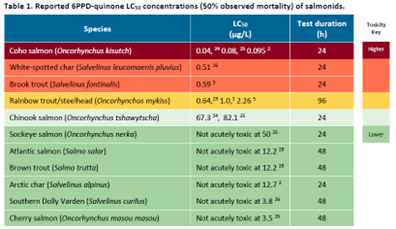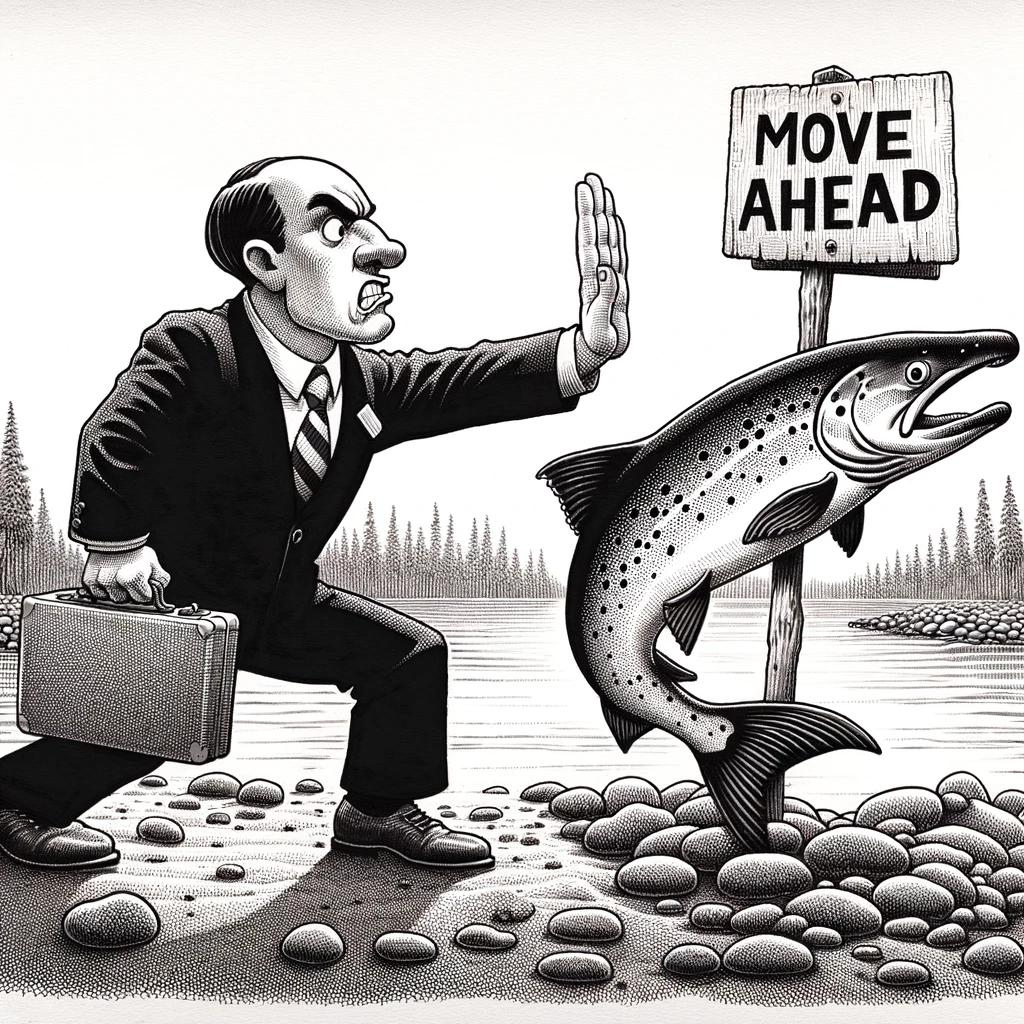Last year, we argued that Washington’s approach to salmon recovery needed some significant changes to get back on track and reverse the frustratingly poor population trends of the past several years.
Several bills were offered this session that would make improvements in that direction.
There have been positive steps, but overall progress is fairly small. The legislature needs to prioritize spending on salmon recovery – there are many good projects that are worthwhile. It is critical, however, to target spending using science-based metrics and to focus on addressing other threats to salmon, such as predation by birds and sea lions, and chemicals like 6PPD.
Here is a quick update on salmon recovery legislation and proposed spending.
Removing regulatory barriers to salmon recovery projects – HB 2193
Washington state spends hundreds of millions of dollars on salmon recovery projects across the state and we should make sure we aren’t wasting money on needless bureaucracy. One of the most common complaints from salmon recovery project managers is that permits and regulations slow them down and make it difficult to restore habitat quickly and cost-effectively. HB 2193 would have allowed state agencies to temporarily waive or modify regulations that were hindering salmon recovery projects.
Despite support from salmon recovery advocates, tribal leaders, and others, the bill died in committee.
Addressing the salmon-killing tire chemical 6PPD – SB 5931
Research from the University of Washington found that a chemical in tire rubber known as 6PPD-quinone is lethal to coho salmon at low concentrations. SB 5931 would make 6PPD a priority chemical and instruct the Department of Ecology to determine what regulation would reduce its harmful impact on salmon.
 This approach is only good for the medium-to-long term and Ecology’s record on chemical regulations is mixed. Until tire companies find an alternative to 6PPD, banning the chemical is unlikely. And there would continue to be problems from existing tires.
This approach is only good for the medium-to-long term and Ecology’s record on chemical regulations is mixed. Until tire companies find an alternative to 6PPD, banning the chemical is unlikely. And there would continue to be problems from existing tires.
There are many ways to reduce the impact of 6PPD, particularly by reducing runoff from streets. Filtering runoff through soil (WSU has done very good work on this) and street sweeping would help immediately. Giving state agencies more discretionary power is always risky, but this legislation addresses a serious problem.
The bill passed out of the Senate 40-9 and passed from the House environment committee.
Reducing avian predation – HB 2293
When salmon projects are successful, one concern is that the additional salmon simply end up feeding predators rather than increasing the population of Chinook or other fish.
Last year the Washington State Academy of Sciences released an excellent study of the impact of seals and sea lions on salmon populations, encouraging the state and federal governments to reduce the pinniped population to help salmon.
This year, Rep. JT Wilcox offered legislation to study the impact of avian predation on salmon stocks. HB 2293 would create a work group to study the impact of predation and recommend solutions.
The increased attention to the impact of predation is good news and this legislation will help increase attention to the problem. The bill passed out of the House 97-0 and is scheduled for a vote in the Senate agriculture committee.
Adopt a fish barrier – HB 2045
As part of the larger effort to remove barriers that block habitat for salmon and other fish, HB 2045 would allow counties and cities to accept donations to remove barriers and open up habitat. Like “Adopt-a-road” projects, groups or individuals would be recognized on signs that include “’adopt a fish passage,’ the names of project donors, and the species of fish affected by the project.”
The bill passed out of the House 93-2 and is currently in the Senate agriculture committee.
Habitat restoration for salmon and steelhead populations at high-risk or near recovery – HB 2286
As populations of salmon and steelhead continue to struggle in Washington state, existing funding programs have focused on ensuring we don’t lose ground with existing populations. That philosophy makes it difficult to put additional focus on salmon runs that are near recovery or those at risk of extinction.
HB 2286 would create a targeted fund within the Capital Budget for salmon and steelhead populations that need additional help would fill this need. It would focus additional funding on populations that scientific assessment indicates are near a threshold.
The bill passed out of the House agriculture committee and is currently in the House Capital Budget committee. Since it could be necessary to implement the budget, the proposal is still alive until the end of the session.
Providing a sales and use tax exemption for salmon recovery projects – HB 2289
Taxpayer-funded salmon recovery projects pay sales and use taxes on the materials used during construction. HB 2289 would allow project managers to receive a tax exemption for projects “with the goal of increasing salmon and steelhead stocks, including the construction, restoration, or improvement of habitat, hatchery facilities, and fish barrier removal or replacement, and including land acquisition and easements.”
The legislation is currently in the House Committee on Finance. It has not been voted on but since it could be necessary to implement the budget, it is still technically alive until the end of the session.
Reducing wastewater pollution in Puget Sound – HB 1365
One of the impediments to recovery of salmon in Puget Sound is the discharge of untreated sewage from wastewater plants. In one recent instance, a King County sewage treatment plant spilled 30 million gallons of raw sewage and 235 million gallons of untreated wastewater over the course of a week.
HB 1365 would require municipal wastewater systems to report the amount, timing, and impact of those discharges. It would also require Department of Ecology staff to provide technical assistance, help find grants and funding to reduce spills of untreated wastewater.
The proposal is awaiting a vote by the House. Because it could be necessary to implement the budget, it is still alive until the end of the session.
Reviewing salmon recovery efforts across the state – HB 2463
Watersheds in the state are required to develop salmon recovery plans that highlight priority projects that would promote restoration of healthy salmon populations. HB 2463 would instruct the Joint Legislative Audit Review Committee (JLARC) to conduct a performant audit of salmon recovery planning in four watersheds – two on each side of the state. The audits would examine the goals, how watersheds measure progress, funding, and how scientific data is used to inform decision-making.
It is wise to occasionally have an independent audit of planning and actions, especially since we are not meeting our salmon recovery goals. This legislation should provide support to local watersheds that may not have the capacity to undertake this kind of audit. It should not become a tool to create more state control or oversight of local watersheds. The most effective salmon recovery efforts are likely to be those planned and implemented by people on the ground, who have the most complete knowledge of the situation and are accountable for the success or failure of projects.
Along those lines, while it is critical to use available science, much of the knowledge about the particular challenges to salmon recovery in a watershed are based on the experience and observation of people on the ground. That knowledge, while not typically considered “scientific,” is still extremely valuable.
The legislation passed out of the House agriculture committee and is now in the House Appropriations committee. Because it could be necessary to implement the budget, it is still alive until the end of the session.




